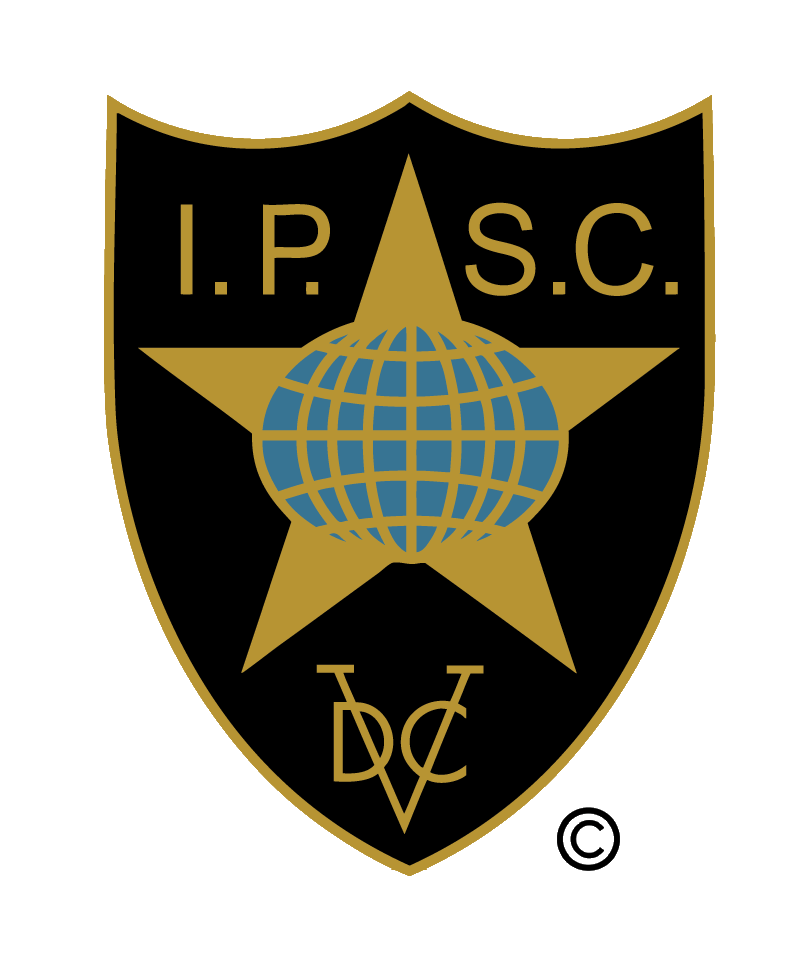HANDGUN .22LR DISCIPLINE
Open Division
| 1. | Minimum/maximum caliber | Commercially manufactured .22LR |
| 2. | Minimum trigger pull (see Appendix E4a) | No |
| 3. | Maximum handgun size | No |
| 4. | Maximum magazine length | 170 mm (see Appendix E1) |
| 5. | Maximum ammunition capacity | No |
| 6. | Max. distance of handgun and allied equipment from torso | 50 mm (see Rule 5.2.5) |
| 7. | Rule 5.2.10 / Appendix E2 applies | No |
| 8. | Optical/electronic sights | Yes |
| 9. | Compensators, ports, sound and/or flash suppressors | Yes |
Standard Division
| 1. | Minimum/maximum caliber | Commercially manufactured .22LR |
| 2. | Minimum trigger pull (see Appendix E4a) | No |
| 3. | Maximum handgun size | Yes, see below |
| 4. | Maximum magazine length | Yes, see below |
| 5. | Maximum ammunition capacity | Yes, see below |
| 6. | Max. distance of handgun and allied equipment from torso | 50 mm (see Rule 5.2.5) |
| 7. | Rule 5.2.10 / Appendix E2 applies | Yes |
| 8. | Optical/electronic sights | No |
| 9. | Compensators, ports, sound and/or flash suppressors | No, see below |
Special conditions:
- A handgun in its ready condition (see Section 8.1), but unloaded and with an empty magazine inserted or empty cylinder closed, must fit wholly within the confines of a box which has internal dimensions of 225 mm x 150 mm x 45 mm (tolerance of +1 mm, -0 mm). Note that all magazines must comply.
- The handgun is placed inside the box (and ultimately removed) by the competitor with the slide parallel to the longest side of the box. Rear adjustable sights may be slightly depressed but the slide must be fully forward, and all other features of the handgun, (e.g. collapsible and/or folding sights, slide rackers, thumb rests, grips etc.), must be fully extended or deployed when the gun is seated inside the box. Additionally, telescoping magazines and/or magazines with compressible base pads are expressly prohibited.
- Only porting of barrels is prohibited. Slides may be ported.
- Magazines accessible to a competitor during a COF must not contain more than 10 rounds at the Start Signal.
Classic Division
| 1. | Minimum/maximum caliber | Commercially manufactured .22LR |
| 2. | Minimum trigger pull (see Appendix E4a) | No |
| 3. | Maximum handgun size | Yes, see below |
| 4. | Maximum magazine length | Yes, see below |
| 5. | Maximum ammunition capacity | Yes, see below |
| 6. | Max. distance of handgun and allied equipment from torso | 50 mm (see Rule 5.2.5) |
| 7. | Rule 5.2.10 / Appendix E2 applies | Yes |
| 8. | Optical/electronic sights | No |
| 9. | Compensators, ports, sound and/or flash suppressors | No |
Special conditions:
- A handgun in its ready condition (see Section 8.1), but unloaded and with an empty magazine inserted, must fit wholly within the confines of a box which has internal dimensions of 225 mm x 150 mm x 45 mm (tolerance of +1 mm, -0 mm). Note that all magazines must comply.
- The handgun is placed inside the box (and ultimately removed) by the competitor with the slide parallel to the longest side of the box. Rear adjustable sights may be slightly depressed during insertion but the slide must be fully forward when the gun is seated inside the box.
- Handguns must be based on and visibly resemble the profile and contours of the classic 1911-genre design. This means a single-stack, one piece metal frame, slide with stirrup cuts, and a dust cover (with or without an accessory rail) which has a maximum length of 75 mm when measured from the leading edge of the dust cover to the rear of the slide stop pin.
Magazine wells cannot exceed a maximum outside width of 35 mm. Compliance is checked by way of a 35 mm wide, and at least 5 mm deep, notch carved into the outside of the box, or by use of a ruler or caliper, as approved by the officiating Range Master.
- Prohibited modifications / parts are slide lightening cuts, weak hand thumb rests and slide rackers.
- Permitted modifications are shaped slides (flat-top, tri-top etc.), shaped trigger guards (squared, undercut etc.), bob-tail backstraps, bull or coned barrels, external extractors, finger-grooves (machined, add-on, wrap-around etc.), custom magazine release buttons, triggers, hammers, single/ambidextrous thumb safeties, any open sights (which may be embedded into the slide), and extended slide lock levers and thumb shields provided they do not act as a thumb rest.
Other modifications permitted include those of a cosmetic nature (e.g. custom grip panels, scrimshaw or similar surface engravings, checkering, serrations etc.).
- Magazines accessible to a competitor during a COF must not contain more than 10 rounds at the Start Signal.
